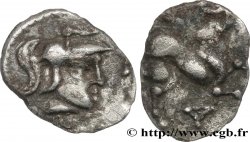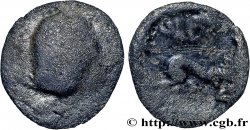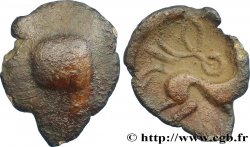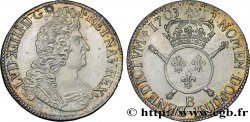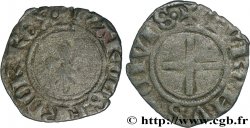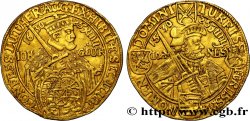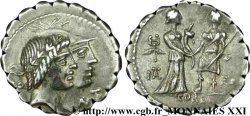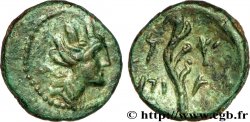157.00 €
Количество
Добавить в корзину

Тип Obole au carré
Дата: IIe - Ier siècles avant J.-C.
Металл: silver
Диаметр: 10 mm
Вес: 0,68 g.
Редкость: R3
Комментарии о состоянии
Flan voilé. Joli revers fin. Patine grise
Лицевая сторона
Аверс: легенда: ANÉPIGRAPHE.
Аверс: описание: Carré en relief.
Обратная сторона
Реверс: легенда: ANÉPIGRAPHE.
Реверс: Описание: Cheval (androcéphale ?) à droite ; une victoire stylisée dégénérée de Bridiers, au-dessus de la croupe.
Комментарий
Ce monnayage était inédit jusqu'à très récemment ; il est repris dans le Nouvel Atlas Tome III comme type VII "à la protubérance carrée" de la série 1088 "fractions en argent des peuples centraux". La victoire du revers se retrouve sur les oboles attribuées aux Cénomans ; elle est imitée des drachmes de Bridiers. Deux types de revers sont connus ; avec le revers à droite et avec le revers à gauche, mais la plupart des quelques exemplaires connus ont un revers à droite.
Sur cet exemplaire, le cheval ne semble pas androcéphale, mais plutôt avoir une énorme mâchoire ouverte en guise de tête (? ?).
This coinage was unprecedented until very recently; it is included in the New Atlas Volume III as type VII \\\"with the square protuberance\\\" of the series 1088 \\\"silver fractions of the central peoples\\\". The reverse victory is found in the mite attributed to the Cenomans; it is imitated from the drachmas of Bridiers. Two types of setbacks are known; with the reverse on the right and with the reverse on the left, but most of the few known examples have a reverse on the right. In this example, the horse does not appear to be androcephalic, but rather to have a huge open jaw as a head (??)
Sur cet exemplaire, le cheval ne semble pas androcéphale, mais plutôt avoir une énorme mâchoire ouverte en guise de tête (? ?).
This coinage was unprecedented until very recently; it is included in the New Atlas Volume III as type VII \\\"with the square protuberance\\\" of the series 1088 \\\"silver fractions of the central peoples\\\". The reverse victory is found in the mite attributed to the Cenomans; it is imitated from the drachmas of Bridiers. Two types of setbacks are known; with the reverse on the right and with the reverse on the left, but most of the few known examples have a reverse on the right. In this example, the horse does not appear to be androcephalic, but rather to have a huge open jaw as a head (??)







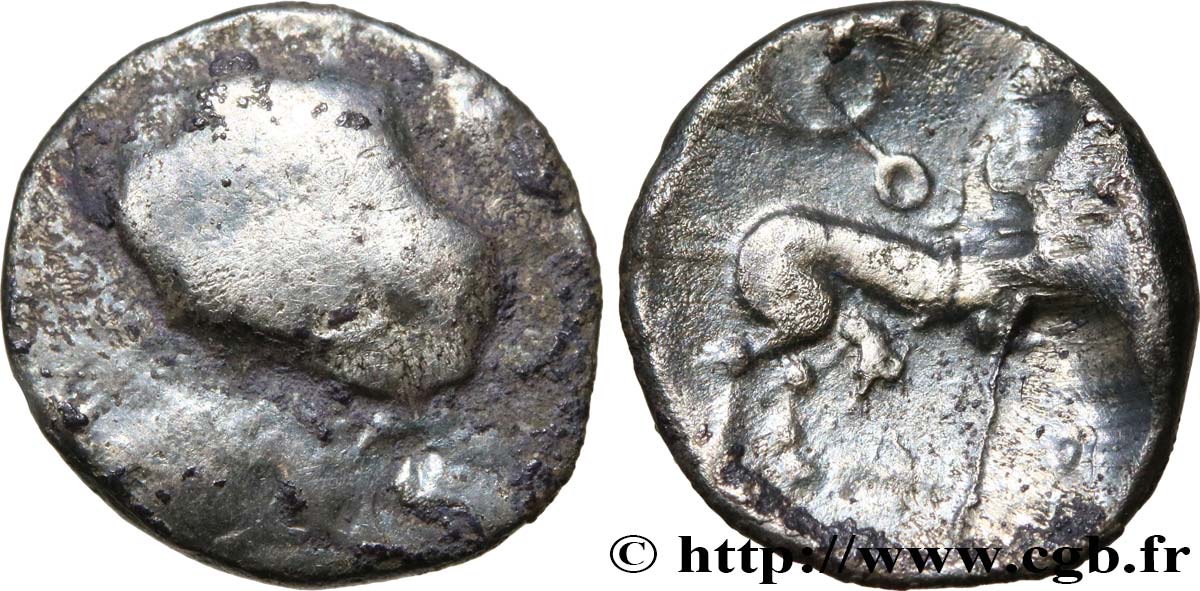
 Cообщить об ошибке
Cообщить об ошибке Распечатать страницу
Распечатать страницу Отправить мой выбор
Отправить мой выбор Задать вопрос
Задать вопрос Consign / sell
Consign / sell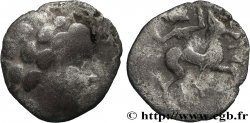
 Информация
Информация